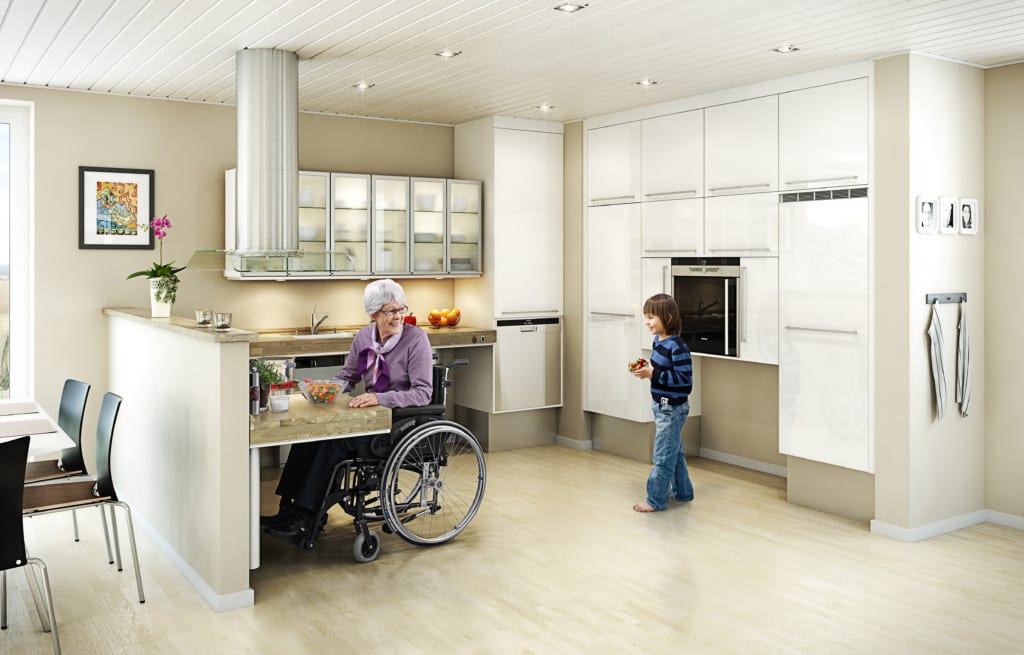A good crowd of local residents made their way to Lakewood Public Library to enjoy LakewoodAlive’s latest home maintenance workshop on Thursday evening, June 6.
Led by Beth Glas of Maximum Accessible Housing of Ohio (MAHO), “Knowing Your Home: Bringing Universal Design Into Your Home” gave residents the opportunity to learn about ways to create a home that can be used by all people, to the greatest extent possible, without the need for adaption or specialized design.
Now in its sixth year, LakewoodAlive’s Knowing Your Home workshop series draws hundreds of attendees annually to learn home maintenance best practices. Our workshop series is generously supported by: Citizens Bank, City of Lakewood, Cleveland Lumber Company and First Federal Lakewood.
If you happened to miss this particular workshop, we’ve got you covered. Here are our four key takeaways.
1. Reasons for Universal Design
Creating a home that has universal design can be helpful for all people. First, anyone can use it and it avoids stigmatizing users. Universal design is flexible to use, it provides choice in method(s) of use and provides adaptability. Universal design can eliminate unnecessary complexity and has a low physical burden. It can be used by all strengths with little fatigue. All of these are reasons why universal design is helpful in a home.
2. Entryway and Home Features
The entryway and other general features are always important to think about when it comes to a universal home. For entry features, it is helpful to have at least one zero-step entry, which can be a 1 to 12 maximum slope, one inch of rise for 12 inches of length, while a ratio of 1 to 20 is even better. Other things to consider include a widened doorway, peepholes or windows for users of all heights and a low threshold, usually no greater than a half-inch beveled is best. Additionally, it’s worthwhile to keep general features in mind, including having a travel path without rugs, lever door handles, light switches mounted lower and outlets mounted higher. Having these features in your home can help create a flexible use for anyone.
3. Kitchen and Bath Features
As a homeowner, it is important to think of the areas in your home and how they can be adjusted to create a universal design. Two areas in the home to consider are the kitchen and bathroom. When it comes to a kitchen a large island closing off maneuverability in that space might not be the best idea. Some features you can add to both the kitchen and bathroom include faucets with a single-lever handle and D-shaped cabinet handles. For the bathroom, specifically, it would help to have doors that open out, a roll-in shower, a handheld showerhead and a grab-bar. Adding these items to your home can create a well-designed area that can be used equally by anyone.
4. Magic Numbers
When it comes to the space within a home, there are certain numbers that help all people with different abilities. First is the width of a door for proper clearance: 32 inches is the minimum width of door clearance, although having a clearance of 36 inches or more is better. If clearance is an issue, swing clear hinges can provide two additional inches of clearance. Another objective to strive for is achieving a clear travel path: 36 inches of clear path is recommended but having 42 inches or more is ideal. What can help clear that path is making sure cords are pushed to the side, and removing excess furniture. Maneuverability is essential. Having 5 to 6 square feet of space with extra room to maneuver is beneficial. The best range for reaching items – such as outlets, light switches or bulk of storage – is between 18 and 48 inches. Keeping finished tables/countertop heights between 28 and 36 inches is also helpful.

